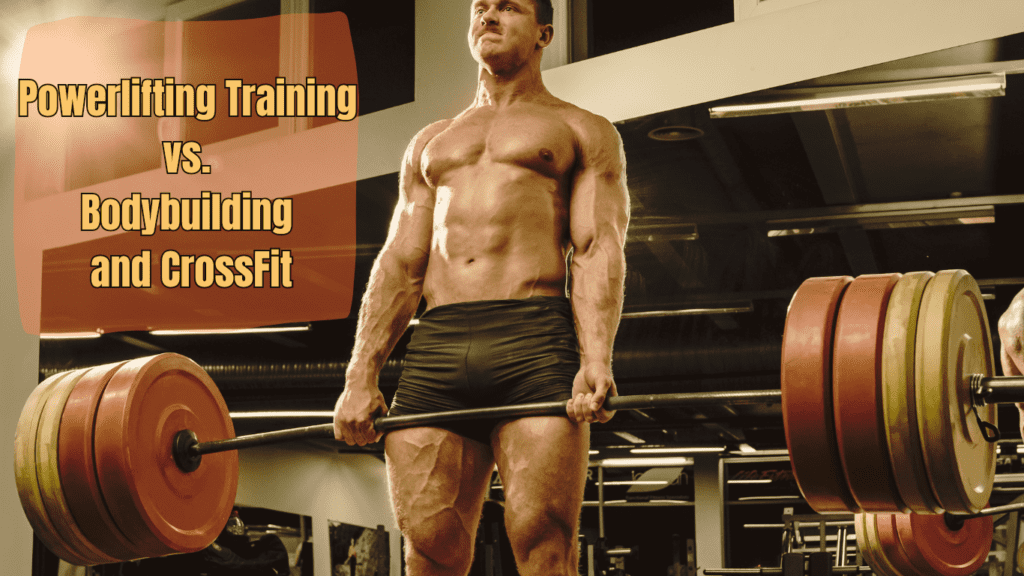Introduction to Barbell Complex Workouts: A Game-Changer for Your Fitness Routine
Did you know that barbell complex workouts can transform your fitness routine in ways you never imagined? Imagine walking into the gym, picking up a barbell, and in just a few moves, working almost every muscle in your body. No need for switching equipment or waiting for machines to be free. It’s just you and the barbell, moving through a sequence that challenges your strength, endurance, and coordination. Sounds intriguing, doesn’t it? If you’ve ever felt stuck in your fitness journey or overwhelmed by the variety of exercises, barbell complex workouts might be the game-changer you need.
A barbell complex is a series of exercises performed back-to-back using a single barbell. Unlike traditional weightlifting routines where you might rest between sets and switch up equipment, a barbell complex requires you to transition from one move to the next without putting the barbell down. This continuous movement not only spikes your heart rate but also targets multiple muscle groups, making it a highly efficient workout. Think of it as a full-body workout condensed into a short, intense session. The benefits are manifold – from improving cardiovascular fitness and muscular endurance to enhancing coordination and functional strength.
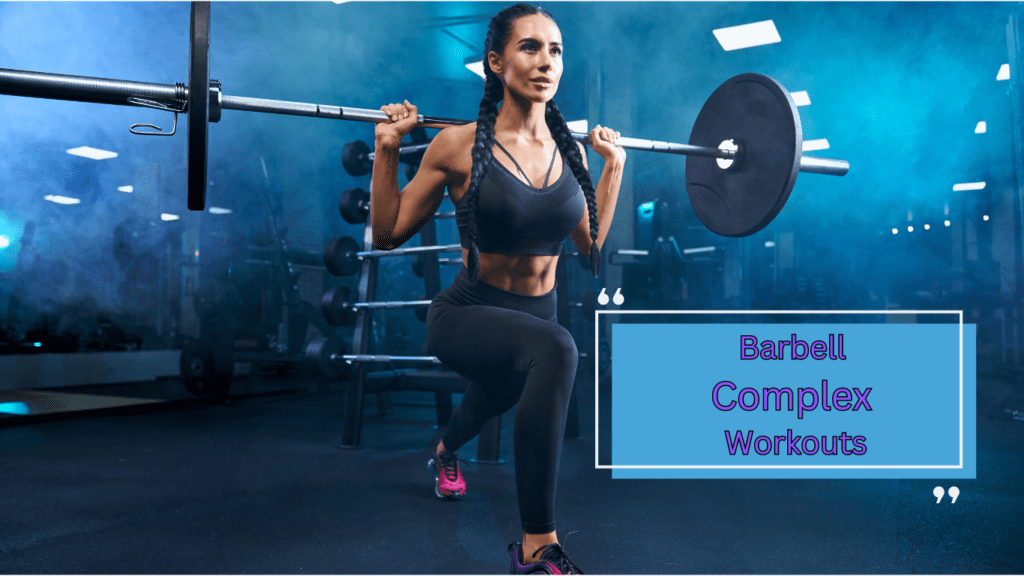
One of the great things about barbell complex workouts is their versatility. Whether you’re a seasoned lifter or a beginner, you can tailor these workouts to match your fitness level and goals. The weight of the barbell can be adjusted to suit your strength, and the exercises can range from basic moves like deadlifts and rows to more complex lifts like snatches and cleans. This adaptability makes barbell complexes accessible and appealing to a wide range of fitness enthusiasts. Moreover, these workouts are time-efficient. In today’s fast-paced world, finding time to work out can be challenging. With barbell complexes, you can achieve a thorough and effective workout in a fraction of the time you might spend on a traditional gym session.
In this article, we’ll delve deeper into the myriad benefits of barbell complex workouts, provide detailed instructions on how to perform them correctly, and share sample workouts to get you started. But for now, let’s focus on what makes these workouts stand out and why they’re worth incorporating into your fitness regimen. Picture this: you enter the gym, pick up a barbell, and begin your sequence. You start with a set of deadlifts, feeling your hamstrings and glutes engage. Without dropping the bar, you transition to bent-over rows, activating your back and arms. Next, you move into front squats, challenging your legs and core, and then press the bar overhead, engaging your shoulders and upper body. The continuous flow keeps your heart pumping and your muscles working in harmony.
Subscribe And Get Our Free E-Book:Unlocking The Power Of Nutrition-Supplements, Substitutes, and Superfoods!
This seamless transition from one exercise to the next not only saves time but also keeps your workout intensity high. This high-intensity nature of barbell complex workouts is fantastic for burning calories and improving cardiovascular health. Unlike traditional cardio, which can be monotonous, barbell complexes offer a dynamic and engaging way to get your heart rate up. Plus, the incorporation of resistance training means you’re also building muscle, leading to a higher metabolic rate and more calories burned even at rest.
Another advantage of barbell complexes is their ability to improve functional strength. Functional strength refers to the kind of strength that helps you perform everyday activities more efficiently and safely. Because barbell complexes mimic real-life movements, they enhance your ability to perform tasks that require multiple muscle groups working together. This is especially beneficial for athletes and individuals looking to improve their overall physical performance.
Let’s not forget the mental challenge involved in these workouts. The focus and discipline required to move through a series of exercises without resting can be daunting but also incredibly rewarding. This mental toughness translates into other areas of life, helping you develop resilience and determination. Additionally, the simplicity of needing only one piece of equipment means you can perform barbell complex workouts almost anywhere – at the gym, at home, or even outdoors. This flexibility can help maintain consistency in your fitness routine, as you’re not limited by access to a wide range of equipment.
So, why not give barbell complex workouts a try? They’re efficient, effective, and offer a fresh approach to your fitness routine. Whether your goal is to build muscle, lose fat, or improve your overall fitness, barbell complexes can help you get there. In the upcoming sections of this article, we’ll explore the specific benefits in more detail, guide you through the correct techniques, and provide you with sample workouts to try. But for now, keep in mind the transformative potential of incorporating barbell complexes into your routine. They’re more than just a workout – they’re a comprehensive fitness solution that can help you achieve a stronger, healthier, and more resilient body.
Barbell Complex For Insane Fat Loss Video
What is a Barbell Complex?
A barbell complex is a powerful workout method that has gained popularity for its efficiency and effectiveness. But what exactly is a barbell complex? In simple terms, it is a sequence of barbell exercises performed consecutively without putting the bar down. This unique workout structure involves moving from one exercise to the next, maintaining a steady flow that keeps your heart rate elevated and your muscles constantly engaged. The continuous movement is what sets barbell complexes apart from traditional weightlifting routines, where rest periods between sets are common.
To delve deeper into the components of a barbell complex, let’s break down what typically constitutes this type of workout. A standard barbell complex includes several exercises, usually ranging from four to six, performed back-to-back. These exercises can vary widely but often include movements like deadlifts, cleans, presses, rows, and squats. The key is to select exercises that target different muscle groups, ensuring a comprehensive full-body workout. For instance, you might start with deadlifts to engage your lower body, transition to bent-over rows for your back, move into front squats for your legs and core, and finish with overhead presses to work your shoulders and arms. The seamless transition from one exercise to the next without resting is crucial, as it keeps the intensity high and maximizes the benefits.
The purpose of barbell complex workouts extends beyond just building muscle. One of the primary goals is to improve overall strength. By lifting a barbell through a range of exercises, you’re challenging multiple muscle groups simultaneously, which enhances your strength more effectively than isolating individual muscles. This method also promotes functional strength, which is crucial for performing everyday tasks and athletic activities. The continuous, dynamic movements mimic real-life actions, making you stronger and more capable in your daily life.
Another significant benefit of barbell complex workouts is conditioning. The high-intensity nature of these workouts improves cardiovascular fitness by elevating your heart rate and keeping it elevated throughout the session. This cardiovascular boost not only enhances your endurance but also supports better heart health. Unlike traditional cardio, such as running or cycling, barbell complexes combine strength and cardio, providing a more comprehensive fitness routine.

Fat loss is another primary objective of barbell complexes. The combination of strength training and high-intensity cardio creates a potent formula for burning calories. When you perform a barbell complex, you’re engaging multiple muscle groups and maintaining a high heart rate, which leads to increased calorie expenditure. Additionally, the resistance training component helps build lean muscle mass, which boosts your metabolism and aids in fat loss even when you’re at rest. This makes barbell complexes an excellent choice for those looking to lose weight and tone their bodies simultaneously.
Incorporating barbell complex workouts into your routine can also lead to improved coordination and agility. The fluid transitions between exercises require a good sense of balance and control, enhancing your overall athleticism. This improved coordination translates into better performance in other physical activities and sports. The mental focus needed to perform these exercises correctly also sharpens your concentration and discipline, contributing to your overall well-being.
One of the most appealing aspects of barbell complex workouts is their time efficiency. In today’s busy world, finding time to work out can be a challenge. Barbell complexes offer a solution by providing a full-body workout in a short amount of time. Since you’re combining multiple exercises into one continuous sequence, you can complete a highly effective workout in as little as 15 to 20 minutes. This makes it easier to fit exercise into your daily schedule without compromising on the quality of your workout.
Moreover, barbell complex workouts are highly versatile. Whether you’re a beginner or an advanced lifter, you can adjust the weight and complexity of the exercises to match your fitness level. Beginners can start with lighter weights and simpler movements, while more experienced lifters can increase the weight and incorporate more challenging exercises. This adaptability makes barbell complexes suitable for people at all stages of their fitness journey.
The simplicity of the equipment required is another advantage. All you need is a barbell and some weights, making it easy to perform these workouts at the gym, at home, or even outdoors. This minimal equipment requirement eliminates the need for a gym membership or a lot of space, providing you with the flexibility to work out wherever and whenever it suits you.
Incorporating barbell complex workouts into your fitness routine can also enhance your mental resilience. The continuous, high-intensity nature of these workouts demands a high level of mental focus and determination. Pushing through the discomfort and maintaining form as you move from one exercise to the next builds mental toughness. This resilience can carry over into other areas of your life, helping you tackle challenges with greater confidence and persistence.
Barbell complex workouts offer a myriad of benefits that can revolutionize your approach to fitness. By combining strength training with high-intensity cardio, they provide a comprehensive workout that improves strength, conditioning, and fat loss. The versatility and efficiency of these workouts make them accessible to everyone, regardless of their fitness level or schedule. With minimal equipment required, you can easily incorporate barbell complexes into your routine and start reaping the rewards. Whether you’re looking to build muscle, lose weight, or enhance your overall fitness, barbell complex workouts are a powerful tool to help you achieve your goals.
Benefits of Barbell Complex Workouts
When it comes to maximizing your workout efficiency, barbell complex workouts are a top choice. These workouts are designed to save time by combining strength training and cardio into one seamless routine. Instead of dedicating separate sessions to lifting weights and performing cardiovascular exercises, you can accomplish both simultaneously. This integration means you can achieve a comprehensive workout in a fraction of the time you might spend on traditional methods. The continuous flow from one exercise to the next keeps your heart rate elevated, providing an intense cardio workout while you build muscle. This dual approach is ideal for those with busy schedules, allowing you to get in and out of the gym quickly without compromising on the quality of your workout.
The versatility of barbell complex workouts is another significant benefit. Whether your goal is to build muscle, improve endurance, or lose fat, barbell complexes can be adapted to suit your needs. By adjusting the weight of the barbell and selecting different exercises, you can tailor the intensity and focus of the workout. For instance, if you aim to increase strength, you might choose heavier weights and compound movements like deadlifts and presses. If your goal is endurance, you can opt for lighter weights and a higher number of repetitions. This adaptability makes barbell complexes suitable for a wide range of fitness levels, from beginners to advanced athletes. You can continually modify your routine to match your evolving fitness goals, keeping your workouts challenging and effective.
One of the standout features of barbell complex workouts is their ability to provide a full-body workout. Each complex typically includes a variety of exercises that target multiple muscle groups, ensuring that no part of your body is neglected. For example, a single complex might include deadlifts for the lower body, rows for the back, presses for the shoulders, and squats for the legs and core. This comprehensive approach not only maximizes muscle engagement but also promotes balanced strength development. By working different muscle groups in one session, you enhance muscular coordination and functional strength, which are crucial for everyday activities and athletic performance.
In addition to building strength, barbell complex workouts significantly improve cardiovascular conditioning. The continuous, high-intensity nature of these workouts keeps your heart rate elevated throughout the session, which enhances cardiovascular endurance. Unlike traditional steady-state cardio, such as jogging or cycling, barbell complexes involve dynamic, compound movements that challenge your heart and lungs in different ways. This varied stimulation improves your body’s ability to transport and utilize oxygen, leading to better overall cardiovascular health. Enhanced endurance not only benefits your athletic performance but also supports long-term heart health, reducing the risk of cardiovascular diseases.
Another major advantage of barbell complex workouts is their effectiveness in promoting fat loss. The combination of strength training and high-intensity cardio creates a potent fat-burning environment. During the workout, the intense effort required to lift weights and transition between exercises leads to a high-calorie burn. This calorie expenditure continues even after the workout is over, thanks to the afterburn effect, also known as excess post-exercise oxygen consumption (EPOC). EPOC refers to the increased rate of oxygen intake following strenuous activity, which helps your body return to its resting state. This process requires additional energy, leading to more calories burned post-workout. As a result, barbell complexes are highly effective for those looking to lose weight and improve body composition.
In summary, barbell complex workouts offer a multitude of benefits that make them a valuable addition to any fitness routine. Their efficiency allows you to save time by combining strength training and cardio into one effective session. The versatility of these workouts means they can be adapted to suit various fitness goals and levels, ensuring that you can continually challenge yourself and achieve your desired results. By providing a full-body workout, barbell complexes engage multiple muscle groups simultaneously, promoting balanced strength development and functional fitness. The high-intensity nature of these workouts improves cardiovascular conditioning, enhancing your endurance and supporting long-term heart health. Finally, the potent combination of strength training and cardio in barbell complexes makes them highly effective for fat loss, thanks to the high-calorie burn and afterburn effect.
Calories Burned and Workout Benefits Chart
| Activity | Calories Burned | Muscle Groups Targeted | Type of Workout | Additional Benefits |
|---|---|---|---|---|
| Barbell Complex Workout | 350-500 | Full-body | Strength & Cardio | Improves functional strength, time-efficient |
| Running (6 mph) | 300-400 | Lower body, core | Cardio | Enhances cardiovascular endurance, stress relief |
| Cycling (moderate effort) | 250-400 | Lower body, core | Cardio | Low impact on joints, improves leg strength |
| Swimming (moderate effort) | 200-350 | Full-body | Cardio & Strength | Low impact, improves flexibility, full-body workout |
| Weightlifting (general) | 130-220 | Varies (depends on exercise) | Strength | Increases muscle mass, boosts metabolism |
| Aerobics (high impact) | 240-355 | Full-body | Cardio & Endurance | Improves coordination, cardiovascular health |
| Yoga | 140-200 | Full-body | Flexibility & Strength | Reduces stress, improves flexibility and balance |
| Walking (4 mph) | 135-200 | Lower body | Cardio | Low impact, easy to incorporate into daily routine |
Whether you’re looking to build muscle, improve endurance, or lose weight, incorporating barbell complex workouts into your fitness routine can help you achieve your goals more efficiently and effectively. The continuous, dynamic movements challenge your body in unique ways, providing a comprehensive workout that supports overall health and fitness. As you progress, you can adjust the weight and complexity of the exercises to match your growing strength and endurance, ensuring that your workouts remain challenging and engaging. With minimal equipment required, these workouts can be performed almost anywhere, offering the flexibility to maintain your fitness routine regardless of your schedule or location. Embrace the power of barbell complex workouts and experience the transformative benefits they can bring to your fitness journey.
How to Perform a Barbell Complex
When it comes to performing barbell complex workouts, the simplicity of the required equipment is one of the appealing factors. All you need is a barbell and some weights, making it easy to get started without the need for a gym full of machines. A standard Olympic barbell and a set of weight plates are sufficient for most barbell complexes. Depending on your strength and experience level, you can adjust the weight to ensure the workout is challenging yet manageable. This minimal equipment requirement means you can perform these workouts at home, in the gym, or even outdoors, providing great flexibility and convenience.

Proper form and technique are crucial for the safety and effectiveness of barbell complex workouts. Since you’ll be performing several exercises back-to-back without putting the bar down, maintaining correct form is essential to prevent injury and ensure you target the right muscle groups. Start with a manageable weight to focus on technique before increasing the load. Engage your core to maintain stability, keep your back straight during lifts, and ensure your movements are controlled and deliberate. Each exercise should flow smoothly into the next, minimizing rest while maintaining precision in your form. Proper technique not only maximizes the benefits of the workout but also reduces the risk of strain or injury.
Common exercises in barbell complex workouts include a variety of movements that target multiple muscle groups. Deadlifts are a staple, engaging the posterior chain, including the hamstrings, glutes, and lower back. Cleans are another popular choice, involving a powerful hip extension to lift the bar from the ground to shoulder height, working the legs, back, and shoulders. Presses, such as overhead presses or push presses, engage the shoulders, arms, and upper chest. Bent-over rows target the upper back and biceps, while squats are essential for working the legs and core. By incorporating these exercises, you ensure a full-body workout that hits all major muscle groups. The key is to select a sequence that allows for a seamless transition from one exercise to the next, maintaining the intensity and flow of the complex.
When it comes to the rep and set structure of barbell complex workouts, there are several approaches you can take depending on your fitness goals. A common structure might involve performing 6-8 repetitions of each exercise within the complex. For example, you might do 6 deadlifts, 6 cleans, 6 presses, 6 rows, and 6 squats, all in succession without putting the bar down. After completing the sequence, you rest for a specified period, typically 1-2 minutes, before repeating the complex. Depending on your fitness level and the intensity of the workout, you might perform 3-5 sets of the complex. As you become more comfortable with the movements and your endurance improves, you can increase the number of sets or reduce the rest period to further challenge yourself.
Rest periods between sets are important to allow your muscles to recover and to maintain a high level of performance throughout the workout. Shorter rest periods, around 1 minute, will keep the intensity high and improve cardiovascular conditioning, while longer rest periods, up to 2 minutes, might be needed when lifting heavier weights to ensure adequate recovery. Listen to your body and adjust rest periods as necessary to maintain the balance between intensity and recovery.
Incorporating these guidelines ensures that your barbell complex workouts are both effective and safe. Starting with the right equipment, focusing on proper form, including a variety of exercises, and structuring your reps and sets appropriately will help you get the most out of these workouts. They are a powerful tool for building strength, improving conditioning, and burning fat, all within a time-efficient and versatile workout format. As you progress, you can continue to adjust the complexity and intensity of your workouts to keep them challenging and aligned with your fitness goals. Whether you are working out at home, in the gym, or outside, barbell complexes provide a straightforward yet highly effective way to enhance your fitness.
Sample Barbell Complex Workouts
Beginner Barbell Complex Workout
For those just starting, a beginner complex should be simple and easy to follow. The focus should be on mastering technique and building confidence with manageable weight. Here’s a breakdown of a beginner barbell complex:
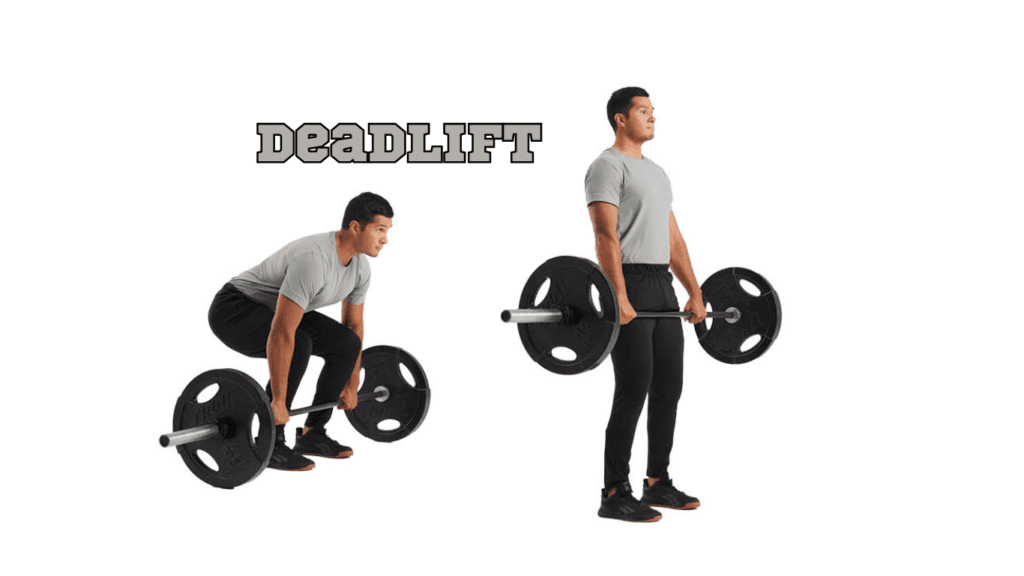
- 5 Deadlifts
- How to Perform: Stand with feet hip-width apart, barbell over the midfoot. Bend at the hips and knees to grab the bar with an overhand grip. Lift the bar by straightening your hips and knees, keeping the bar close to your body. Lower it back down in a controlled manner.
- Purpose: Deadlifts target the posterior chain, including the hamstrings, glutes, and lower back, building foundational strength.
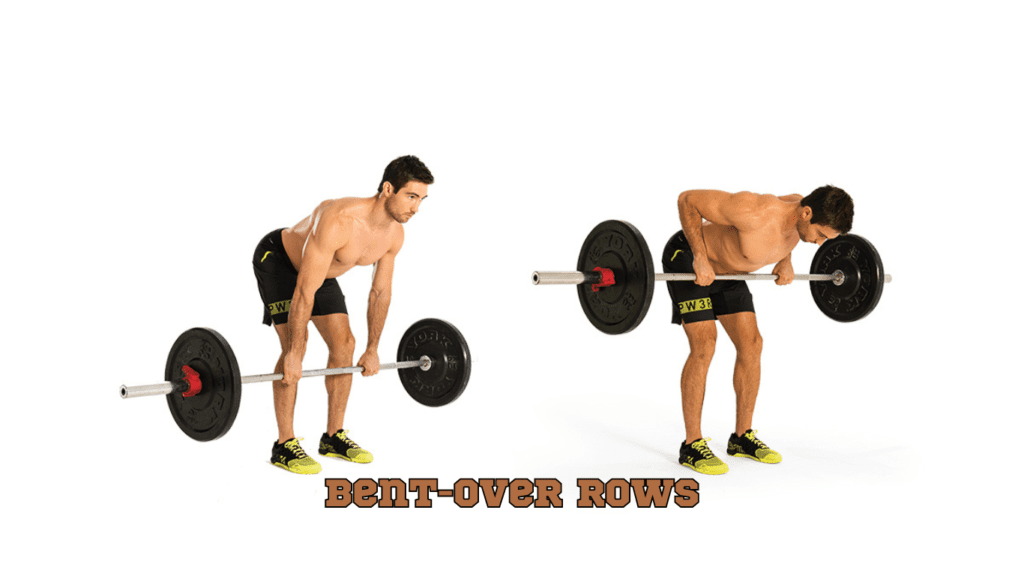
- 5 Bent-over Rows
- How to Perform: Hold the bar with an overhand grip, bend at the hips until your torso is almost parallel to the floor. Pull the bar towards your lower ribcage, squeezing the shoulder blades together, then lower it back.
- Purpose: This exercise targets the upper back and biceps, improving posture and upper body strength.
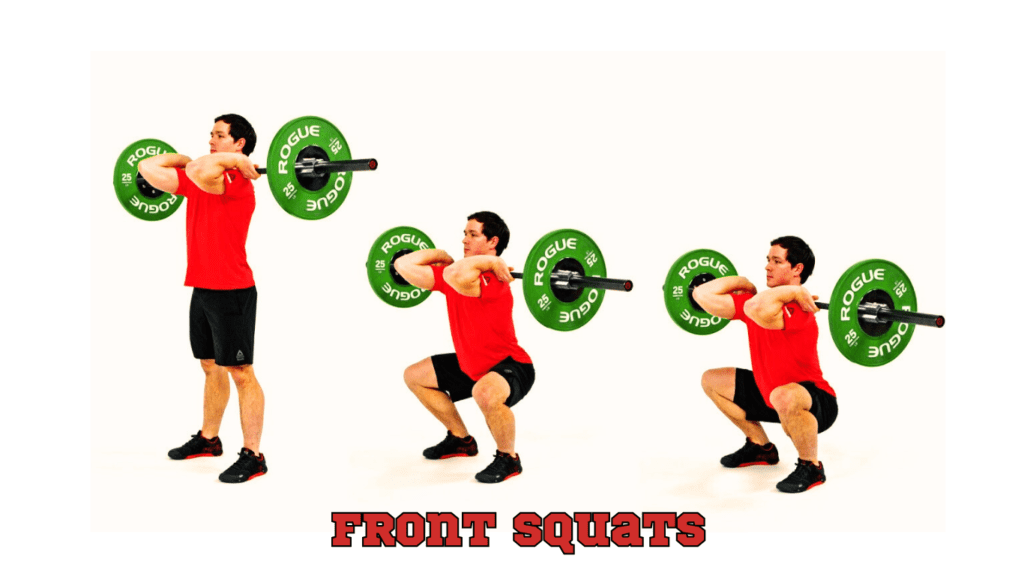
- 5 Front Squats
- How to Perform: With the barbell resting on your shoulders and elbows up, squat down by bending your knees and hips, keeping your torso upright. Push through your heels to stand back up.
- Purpose: Front squats engage the quads, core, and shoulders, promoting lower body strength and stability.
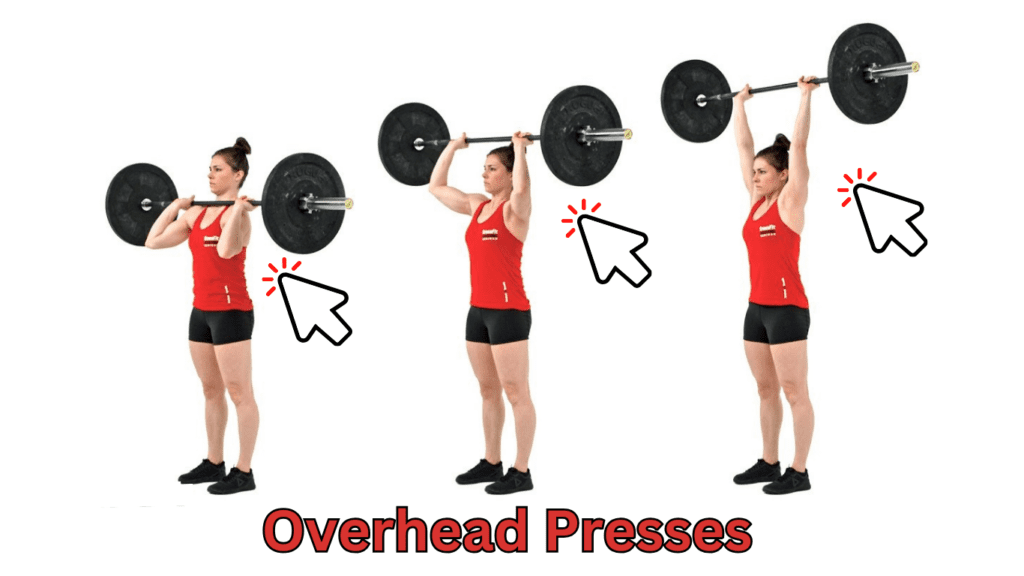
- 5 Overhead Presses
- How to Perform: Start with the barbell at shoulder height. Press it overhead until your arms are fully extended, then lower it back to your shoulders.
- Purpose: This exercise targets the shoulders and triceps, enhancing upper body strength and stability.
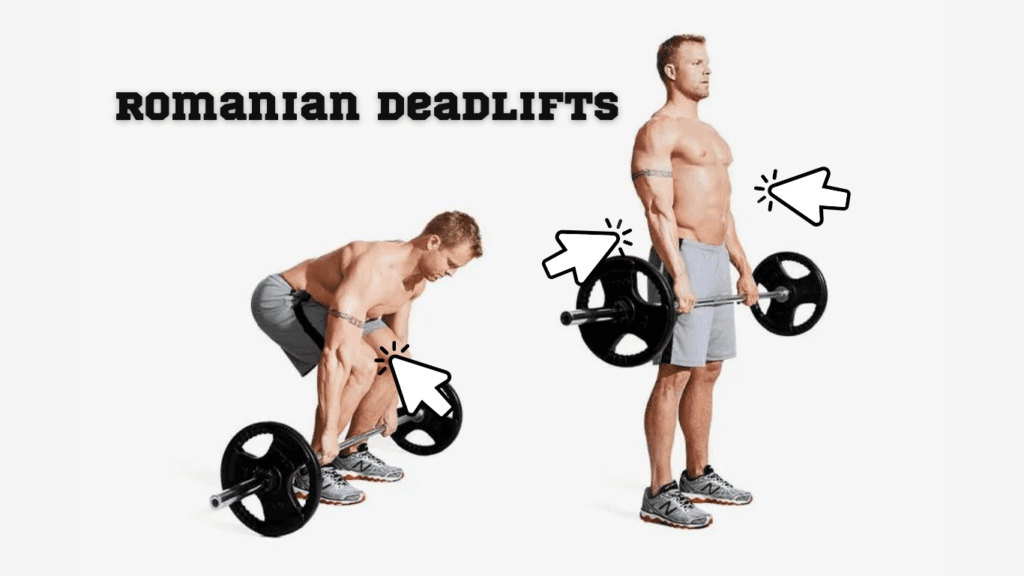
- 5 Romanian Deadlifts
- How to Perform: Stand with feet hip-width apart, barbell in front of you. Keeping a slight bend in your knees, hinge at the hips to lower the bar down the front of your legs, then return to standing.
- Purpose: Romanian deadlifts focus on the hamstrings and glutes, improving posterior chain strength and hip mobility.
This sequence covers multiple muscle groups without overwhelming you, providing a solid foundation for more complex routines later on. Proper form is crucial at this stage to ensure safety and effectiveness.
Intermediate Barbell Complex Workout
For those with some experience, an intermediate complex introduces more challenging movements and slightly heavier weights. Here’s a breakdown of an intermediate barbell complex:
- 6 Deadlifts
- How to Perform: Same as in the beginner workout, but focus on maintaining good form with slightly heavier weight.
- Purpose: Continues to build posterior chain strength and power.
- 6 Hang Cleans
- How to Perform: Start with the barbell at thigh height, hinge slightly at the hips. Explosively extend your hips, shrug your shoulders, and pull the barbell up, catching it in a front rack position.
- Purpose: Hang cleans develop explosive power and coordination, targeting the legs, back, and shoulders.
- 6 Front Squats
- How to Perform: Same as in the beginner workout but with a focus on maintaining good form as the weight increases.
- Purpose: Further develops lower body strength and stability.
- 6 Push Presses
- How to Perform: With the barbell at shoulder height, dip slightly by bending your knees, then explosively press the bar overhead using your legs and shoulders.
- Purpose: Push presses engage the shoulders, triceps, and lower body, enhancing power and upper body strength.
- 6 Bent-over Rows
- How to Perform: Same as in the beginner workout, but with slightly increased weight.
- Purpose: Continues to build upper back and biceps strength.
These exercises increase intensity and introduce more dynamic movements, building endurance and strength. The focus here is on enhancing technique, endurance, and starting to push the limits of strength and conditioning.
Advanced Barbell Complex Workout
For advanced athletes, a challenging complex is necessary to push fitness boundaries. Here’s a breakdown of an advanced barbell complex:
- 7 Power Cleans
- How to Perform: Start with the bar on the floor, feet shoulder-width apart. Lift the bar to thigh height, then explosively extend your hips and catch the barbell in a front rack position.
- Purpose: Power cleans develop full-body explosive power and coordination.
- 7 Thrusters
- How to Perform: Hold the barbell in a front rack position. Perform a full squat, then press the bar overhead as you stand up.
- Purpose: Thrusters combine a squat and an overhead press, targeting the legs, core, shoulders, and arms for full-body conditioning.
- 7 Back Squats
- How to Perform: With the barbell on your back, squat down by bending your knees and hips, then stand back up.
- Purpose: Back squats focus on the lower body, building strength in the quads, hamstrings, and glutes.
- 7 Snatches
- How to Perform: Start with the bar on the floor. Lift it overhead in one smooth motion, catching it with fully extended arms.
- Purpose: Snatches develop explosive power and coordination, engaging the entire body.
- 7 Overhead Squats
- How to Perform: With the barbell overhead, squat down while keeping the bar in line with your feet, then stand back up.
- Purpose: Overhead squats challenge stability and mobility, engaging the legs, core, and shoulders.
These technical movements require higher skill and strength. The combination demands explosive power, coordination, and superior strength, testing endurance and mental toughness. This complex challenges every aspect of physical fitness.
Themed Barbell Complex Workouts
For targeting specific fitness goals, themed barbell complex workouts offer tailored benefits. Here are a few examples:
Strength-Focused Complex
Emphasizes heavier weights with lower repetitions to build muscle strength.
- 5 Deadlifts
- Purpose: Builds posterior chain strength.
- 5 Bent-over Rows
- Purpose: Develops upper back and biceps strength.
- 5 Front Squats
- Purpose: Enhances lower body strength and stability.
- 5 Push Presses
- Purpose: Improves power and upper body strength.
- 5 Clean and Jerks
- Purpose: Combines strength and power, engaging the full body.
This complex is ideal for increasing overall lifting capacity.
Cardio-Focused Complex
Includes lighter weights with higher repetitions to elevate heart rate and improve cardiovascular endurance.
- 10 Hang Cleans
- Purpose: Develops power and coordination.
- 10 Push Presses
- Purpose: Enhances shoulder and arm endurance.
- 10 Front Squats
- Purpose: Engages the legs and core.
- 10 Bent-over Rows
- Purpose: Builds upper back endurance.
- 10 Thrusters
- Purpose: Combines lower and upper body conditioning.
This routine keeps the heart rate high, providing a robust cardio session while engaging multiple muscle groups.
Sport-Specific Complex
For athletes training for specific sports, this complex mimics dynamic and powerful movements needed in the sport.
- 6 Power Cleans
- Purpose: Builds explosive power and coordination.
- 6 Push Presses
- Purpose: Enhances upper body power.
- 6 Front Squats
- Purpose: Strengthens the lower body and core.
- 6 Bent-over Rows
- Purpose: Develops upper back strength and endurance.
- 6 Thrusters
- Purpose: Combines lower and upper body conditioning, enhancing overall athletic performance.
This combination builds explosive power and endurance, enhancing sport-specific performance.
Energy Expenditure and Muscle Groups Targeted Chart
| Workout Level | Exercise | Calories Burned (Approx. per set) | Primary Muscle Groups Targeted | Skill Level Required |
|---|---|---|---|---|
| Beginner | Deadlifts | 15-20 | Hamstrings, Glutes, Lower Back | Beginner |
| Bent-over Rows | 12-18 | Upper Back, Biceps | Beginner | |
| Front Squats | 15-22 | Quads, Core, Shoulders | Beginner | |
| Overhead Presses | 10-15 | Shoulders, Triceps | Beginner | |
| Romanian Deadlifts | 12-20 | Hamstrings, Glutes | Beginner | |
| Intermediate | Deadlifts | 18-25 | Posterior Chain | Intermediate |
| Hang Cleans | 20-30 | Legs, Back, Shoulders | Intermediate | |
| Front Squats | 18-25 | Quads, Core, Shoulders | Intermediate | |
| Push Presses | 15-20 | Shoulders, Triceps, Legs | Intermediate | |
| Bent-over Rows | 15-22 | Upper Back, Biceps | Intermediate | |
| Advanced | Power Cleans | 25-35 | Full Body | Advanced |
| Thrusters | 22-32 | Legs, Core, Shoulders, Arms | Advanced | |
| Back Squats | 20-28 | Quads, Hamstrings, Glutes | Advanced | |
| Snatches | 28-38 | Full Body | Advanced | |
| Overhead Squats | 25-35 | Legs, Core, Shoulders | Advanced | |
| Themed Workouts | Deadlifts | 15-20 | Posterior Chain | Varies (Beginner to Advanced) |
| Strength-Focused | Bent-over Rows | 12-18 | Upper Back, Biceps | Varies (Beginner to Advanced) |
| Front Squats | 15-22 | Quads, Core, Shoulders | Varies (Beginner to Advanced) | |
| Push Presses | 10-15 | Shoulders, Triceps, Legs | Varies (Beginner to Advanced) | |
| Clean and Jerks | 25-35 | Full Body | Intermediate to Advanced | |
| Cardio-Focused | Hang Cleans | 20-30 | Legs, Back, Shoulders | Intermediate to Advanced |
| Push Presses | 15-20 | Shoulders, Triceps, Legs | Intermediate to Advanced | |
| Front Squats | 18-25 | Quads, Core, Shoulders | Intermediate to Advanced | |
| Bent-over Rows | 15-22 | Upper Back, Biceps | Intermediate to Advanced | |
| Thrusters | 22-32 | Legs, Core, Shoulders, Arms | Intermediate to Advanced | |
| Sport-Specific | Power Cleans | 25-35 | Full Body | Intermediate to Advanced |
| Push Presses | 15-20 | Shoulders, Triceps, Legs | Intermediate to Advanced | |
| Front Squats | 18-25 | Quads, Core, Shoulders | Intermediate to Advanced | |
| Bent-over Rows | 15-22 | Upper Back, Biceps | Intermediate to Advanced | |
| Thrusters | 22-32 | Legs, Core, Shoulders, Arms | Intermediate to Advanced |
Incorporating these barbell complex workouts into your routine ensures structured training that matches your fitness level and goals. Adjusting weight, repetitions, and exercises keeps the workouts challenging and effective, helping you achieve your objectives, whether building strength, improving cardiovascular fitness, or enhancing sport-specific performance. With dedication and consistency, barbell complex workouts can be a powerful tool in your fitness journey, delivering impressive results and keeping your routine fresh and engaging.
Tips for Success
When it comes to mastering barbell complex workouts, there are several key tips for success that can help you make the most of your training. One of the most important aspects is progression. To continue making gains and avoid plateaus, it’s essential to gradually increase the challenge of your workouts. This can be done by increasing the weight you lift, the number of repetitions you perform, or the complexity of the exercises included in your complexes. Start with a weight that allows you to complete all exercises with good form, then gradually add more weight as you become stronger. Similarly, you can increase the number of repetitions or sets to push your endurance. Introducing more complex movements, such as transitioning from a hang clean to a full clean, can also provide a new challenge that promotes growth and adaptation.
Equally important is recovery. While barbell complex workouts are intense and can deliver significant results, your body needs time to recover and repair the muscles worked. Adequate rest between sessions is crucial to avoid overtraining and injury. Listen to your body and ensure you get enough sleep, which is when most muscle recovery happens. Active recovery, such as light stretching or low-intensity activities, can also help maintain flexibility and reduce muscle soreness.
A proper warm-up and cool-down are essential parts of any workout routine, especially for something as demanding as barbell complexes. Warming up prepares your body for the workout ahead by increasing blood flow to your muscles, raising your heart rate, and enhancing your range of motion. A good warm-up might include dynamic stretches, light cardio, and mobility exercises specific to the movements you’ll be performing. This not only helps improve performance but also significantly reduces the risk of injury. Cooling down after your workout is just as important. It helps your body gradually return to its resting state, reduces muscle stiffness, and promotes recovery. Static stretching and foam rolling are excellent ways to cool down, helping to alleviate any muscle tightness and improve flexibility.
Nutrition plays a critical role in supporting your barbell complex workouts. To fuel your body effectively, focus on a balanced diet rich in protein, healthy fats, and carbohydrates. Protein is vital for muscle repair and growth, so include sources such as lean meats, dairy, legumes, and nuts in your diet. Carbohydrates provide the energy needed for high-intensity workouts, so don’t shy away from whole grains, fruits, and vegetables. Healthy fats, found in foods like avocados, nuts, and olive oil, support overall health and help with prolonged energy. Staying hydrated is also crucial, as dehydration can significantly impair performance and recovery. Drinking plenty of water throughout the day and considering electrolyte-rich drinks during intense sessions can help maintain optimal hydration levels.
Progression in your barbell complex workouts can be achieved by increasing weight, reps, or exercise complexity. This gradual increase ensures continued gains and avoids training plateaus. Recovery is equally important, as it allows your muscles to repair and grow, preventing overtraining and injury. Listening to your body and getting adequate rest and sleep are crucial for optimal recovery. Incorporating a proper warm-up and cool-down into your routine enhances performance, reduces the risk of injury, and promotes faster recovery. Dynamic stretches and mobility exercises prepare your body for the workout, while static stretching and foam rolling help your muscles relax and recover afterward. Lastly, proper nutrition supports your training by providing the necessary fuel and nutrients. A balanced diet rich in protein, healthy fats, and carbohydrates, along with adequate hydration, ensures your body has the energy and building blocks needed for effective training and recovery. By paying attention to these key areas, you can maximize the benefits of your barbell complex workouts and achieve your fitness goals more efficiently.
Common Mistakes to Avoid
When diving into the world of barbell complex workouts, avoiding common mistakes can make all the difference in achieving your fitness goals effectively and safely. Here are some crucial pitfalls to steer clear of:
Overloading Weight: One of the most common mistakes beginners make is overloading weight too quickly. It’s tempting to want to lift heavy right from the start, but this can lead to improper form and increased risk of injury. Start with a weight that allows you to perform the exercises with correct technique. Gradually increase the weight as your strength and confidence grow. This approach not only minimizes the risk of injury but also ensures that you’re targeting the right muscles and maximizing the benefits of each exercise.
Poor Technique: Proper form is paramount in barbell complex workouts. Incorrect technique not only reduces the effectiveness of the exercise but also increases the likelihood of injury. Common form mistakes include rounding your back during deadlifts, letting your knees cave in during squats, or using momentum rather than muscle strength to lift the bar. To correct these, focus on maintaining a neutral spine, engaging your core, and performing each movement with controlled, deliberate motions. Consider working with a qualified trainer to learn proper technique or filming yourself to review your form.
Skipping Warm-Ups: Neglecting a proper warm-up is another critical mistake that can lead to injury and hinder performance. A warm-up prepares your muscles, joints, and cardiovascular system for the demands of the workout ahead. It increases blood flow to your muscles, improves flexibility, and reduces the risk of strains or pulls. Dynamic stretches, light cardio, and mobility exercises specific to the movements you’ll be doing can effectively prepare your body for the intensity of barbell complexes. Spend at least 10-15 minutes warming up before diving into your main workout.
Ignoring Recovery: In the quest for progress, many people overlook the importance of adequate recovery. Barbell complex workouts place significant stress on your muscles and central nervous system. Without proper recovery, such as rest days, sleep, and nutrition, your body cannot repair and rebuild muscle tissue effectively. Over time, this can lead to burnout, decreased performance, and increased risk of injury. Incorporate active recovery strategies like foam rolling, gentle stretching, or low-impact activities on rest days to promote blood flow and reduce muscle soreness.
By being mindful of these common pitfalls and focusing on proper technique, gradual progression, adequate warm-ups, and sufficient recovery, you can optimize your barbell complex workouts for success. Each session should challenge you while maintaining safety and effectiveness, ultimately helping you reach your fitness goals efficiently. Remember, consistency and patience are key in any fitness journey, and listening to your body’s signals will guide you towards long-term progress and overall well-being.
Mastering Barbell Complex Workouts: Key Points, FAQs, and Next Steps
As we conclude our exploration of barbell complex workouts, let’s recap the key points discussed throughout this comprehensive guide and address common questions to help you integrate this effective training method into your fitness regimen.
Key Points Discussed:
Throughout this series, we’ve delved into the intricacies of barbell complex workouts and their benefits. We started by defining what a barbell complex is—a series of exercises performed back-to-back using a barbell without putting it down. These workouts efficiently combine strength and cardiovascular training, making them a time-saving option for busy individuals.
We explored the benefits of barbell complexes, highlighting their efficiency in combining strength and cardio into one session. By engaging multiple muscle groups simultaneously, these workouts promote improved strength, endurance, and fat loss. Their versatility allows for adaptation to various fitness goals, whether you’re aiming to build strength, enhance conditioning, or achieve specific sports performance goals.
Understanding how to perform barbell complexes is crucial for safety and effectiveness. We covered the equipment needed—primarily a barbell and weights—and stressed the importance of maintaining proper form and technique throughout each exercise. Detailed descriptions were provided for different levels of complexity, from beginner to advanced, ensuring that individuals of all fitness levels can benefit from incorporating barbell complexes into their routines.
To maximize the effectiveness of your barbell complex workouts, we discussed essential tips for success. Progression strategies include increasing weight, reps, or exercise complexity gradually over time. Emphasizing the importance of recovery, we highlighted the need for adequate rest between sessions and proper warm-ups and cool-downs to prevent injury and optimize performance. Additionally, we touched on the role of nutrition in supporting workout intensity and enhancing recovery.
Common Questions/FAQ: Barbell Complex Workouts
- Can I use dumbbells instead of a barbell for complexes?
- While barbells are ideal due to their ability to handle heavier weights and stability, dumbbells can be used for similar complexes with appropriate adjustments in weight and exercise selection.
- How often should I do barbell complex workouts?
- Frequency depends on your fitness level and goals. Beginners may start with 1-2 sessions per week, while more experienced individuals can incorporate them 2-4 times weekly, with adequate rest days in between.
- Are barbell complexes suitable for beginners?
- Yes, they can be adapted to suit beginners by starting with lighter weights and simpler exercises, gradually progressing as strength and technique improve.
- What should I do if I can’t perform some of the exercises in a complex?
- Modify the exercises to suit your abilities or seek guidance from a fitness professional to learn proper form and alternatives that still challenge you effectively.
- How long should a typical barbell complex workout last?
- A session can range from 20-45 minutes, depending on the number of exercises, reps, and rest periods. Efficiency is key, so aim for intensity while maintaining proper form.
- Can barbell complexes help with fat loss?
- Yes, barbell complexes can aid in fat loss due to their high-calorie burn and metabolic impact, especially when combined with a balanced diet and adequate hydration.
- What are some alternatives to traditional barbell complexes?
- Alternatives include modifying exercises, adjusting weights, or incorporating different movement patterns to suit individual preferences or limitations.
- How can I prevent injuries during barbell complex workouts?
- Focus on proper form and technique, start with lighter weights, warm up thoroughly, and listen to your body. If you feel pain or discomfort, stop and seek guidance.
- Can barbell complexes improve sports performance?
- Yes, these workouts can enhance overall strength, power, and endurance, which are beneficial for various sports requiring explosive movements and stamina.
- Are barbell complexes suitable for all fitness levels?
- Yes, they can be tailored to suit beginners through to advanced athletes by adjusting weights, exercises, and intensity levels accordingly.
Encouragement and Next Steps:
Now equipped with a solid understanding of barbell complex workouts, I encourage you to incorporate them into your fitness routine. Whether your goal is to build strength, enhance endurance, or simply challenge yourself in new ways, barbell complexes offer a versatile and effective solution. Start gradually, focusing on proper technique and progression, and enjoy the transformative benefits these workouts can bring to your fitness journey.
If you have more questions or want to share your experiences, feel free to leave a comment below. Your feedback and engagement are invaluable as we continue to explore new topics and provide insights into optimizing your fitness lifestyle.
For those eager to delve deeper into strength training or explore more advanced techniques, consider checking out reputable articles or books on barbell complexes and strength training. Building a strong foundation of knowledge will empower you to achieve your fitness goals more effectively.
Thank you for joining me on this journey through the world of barbell complex workouts. Stay tuned for more valuable insights and practical tips to help you on your path to a healthier, stronger you. Remember, consistency and dedication are key—keep pushing forward, and you’ll reap the rewards of your efforts.


